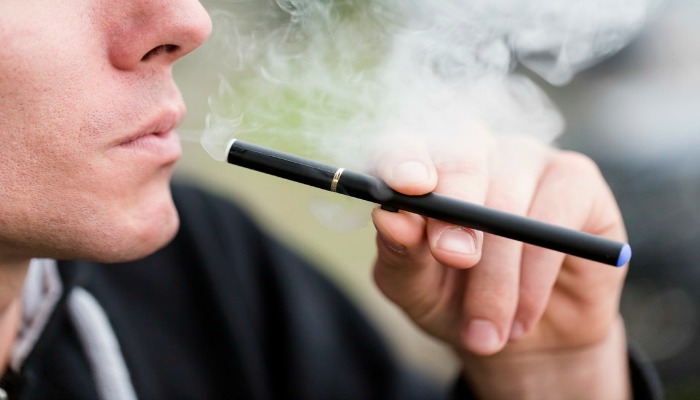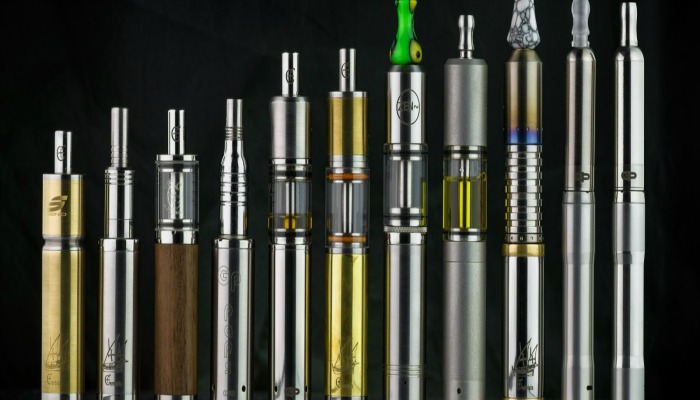
You’re at a stoplight – tapping your steering-wheel to the beat, as your radio politely hums the latest Piano Guys cover – when another car pulls up next to you. The black sedan’s tinted window buzzes down slowly; white smoke then rolls out, flowing through the cracked window and billowing in the air. “Smaug!” gasps your inner-Lord of the Rings fan. But no Tolkienian-beast lies resting on mounds of gold within the 2007 Taurus to your right, just a person, taking long draws from an attractively slender metal object.
Effective August 8, 2016, the FDA has extended its authority to encompass all items that meet the definition of a tobacco product; this includes hookahs, pipe tobacco, cigars, dissolvables, and, yes, e-cigarettes. Under this new rule, e-cigarette companies will face the same scrutiny over the components of the vapor and e-cigarette itself, as cigarette companies. Restrictions on the age required to purchase e-cigarettes will be standardized across the country at 18 years or older (parents should be breathing a sigh of relief here).
Current and past regulation of e-cigarettes has been non-existent, an unsettling fact considering the target audience, middle and high school students. A study conducted by the Center for Disease Control in 2015 found e-cigarettes to be the most popular medium for administering nicotine among young people, followed by hookahs; traditional cigarettes fell to third place.
What is an e-Cigarette?

Unlike traditional cigarettes, e-cigarettes don’t burn or smoke, but produce a vapor caused by heating up a specially made liquid.
- e-Cigarettes do not contain tobacco, but use a liquid containing a mixture of nicotine, flavoring, and other chemicals.
- e-Cigarettes require batteries rather than matches, making them easier for young children to use.
- e-Cigarettes can resemble normal cigarettes, pipes, or even other objects such as pens.
- Smoking an e-cigarette is referred to as vaping
Is “Vaping” Harmful?

- While e-cigarettes don’t have tobacco, they do contain nicotine. Nicotine is not only highly addictive, but has been found to negatively affect brain development in children and teens and cause complications during pregnancy.
- Nicotine poisoning caused by improper use of e-cigarettes or ingestion of the e-cigarette liquid causes nausea, vomiting, diarrhea, abdominal cramps and in some cases, coma or death. The number of calls to poison centers to report incidence of nicotine poisoning caused by e-cigarettes increased 15-fold between 2012 and 2015, found a study published in Pediatrics.
- A recent study in The New England Journal of Medicine found that using e-cigarettes at high voltages causes the emission of formaldehyde, a potent carcinogen.
How many Young People Smoke e-Cigarettes?

- 2.4 million middle and high school students were found to use e-cigarettes in 2014, and this number appears to be on the rise.
- 69% of middle and high school students had been exposed to e-cigarette advertisements via some medium (TV/movies, retail stores, internet, magazines/newspapers, etc).
- Marketing for e-cigarettes draws on many of the marketing tactics used by cigarette companies in the 60’s. Advertisements use notions of sex, rebellion, and freedom to draw an audience at pre-adulthood.
- A new poll shows that youth who use e-cigarettes are 6 times more likely to move on to regular cigarettes than youth who don’t.
e-Cigarettes and the Word of Wisdom

In the May 2016 issue of the New Era, the question was raised, “Are e-cigarettes OK because they’re not real tobacco cigarettes?”
The answer: “No. Not even remotely.”
The sole purpose of e-cigarettes is to deliver nicotine, a highly addictive substance, to the body via vapor. The Word of Wisdom may not warn against e-cigarettes directly, but it does admonish members to avoid substances that foster addiction.
As President Boyd K. Packer said in General Conference, May 1996, “There are many habit-forming, addictive things that one can drink or chew or inhale or inject which injure both the body and spirit which are not mentioned in the revelation .…”





